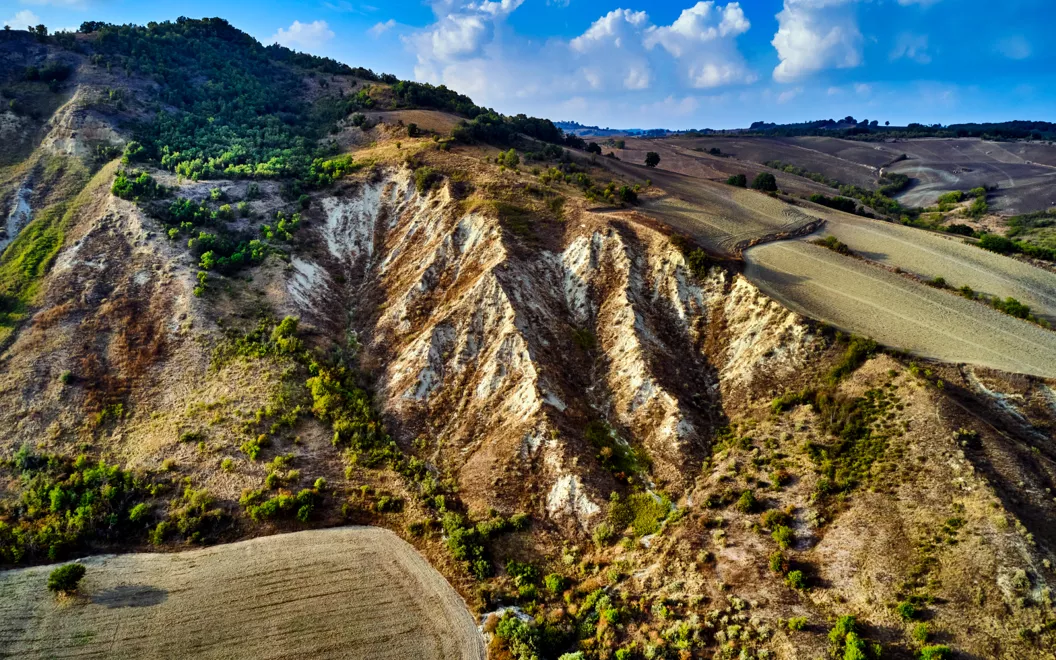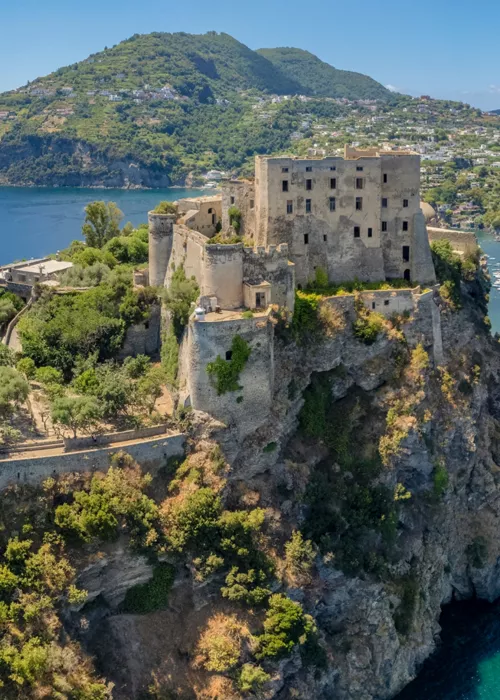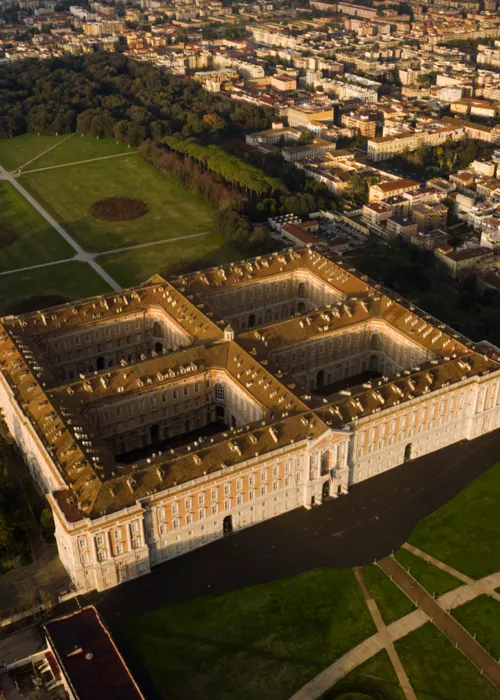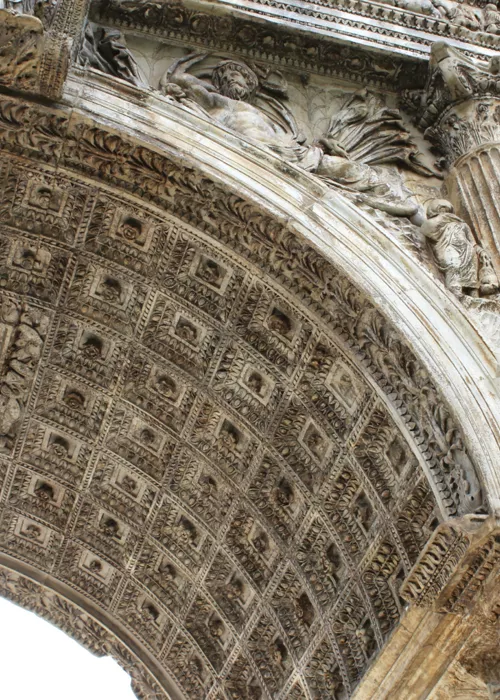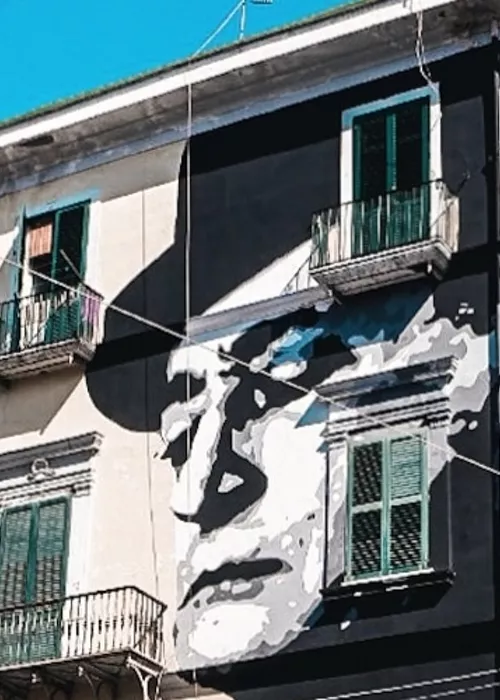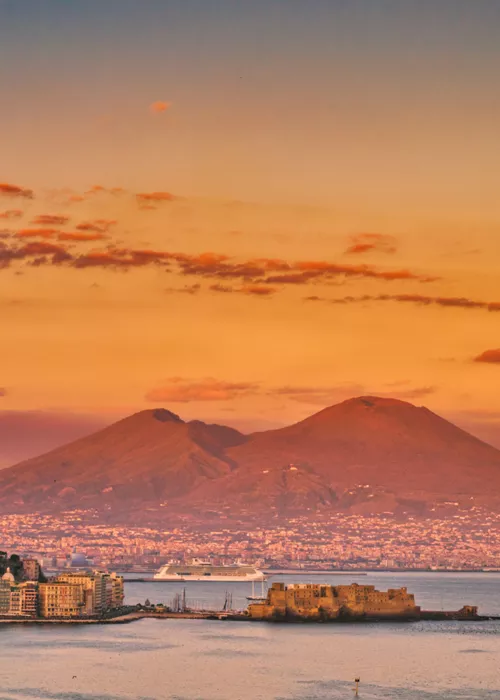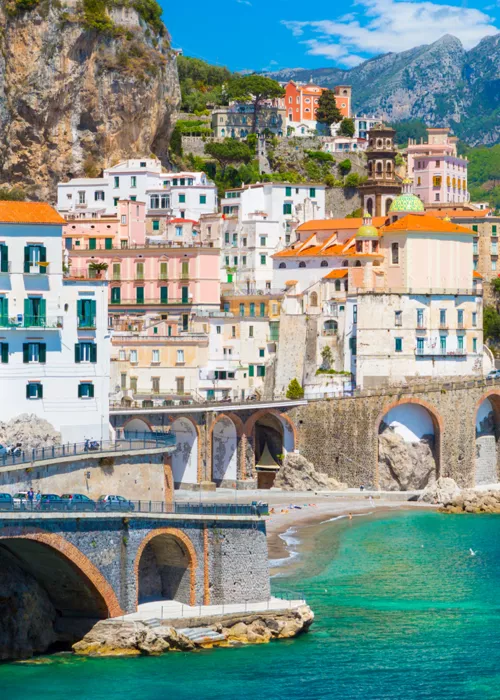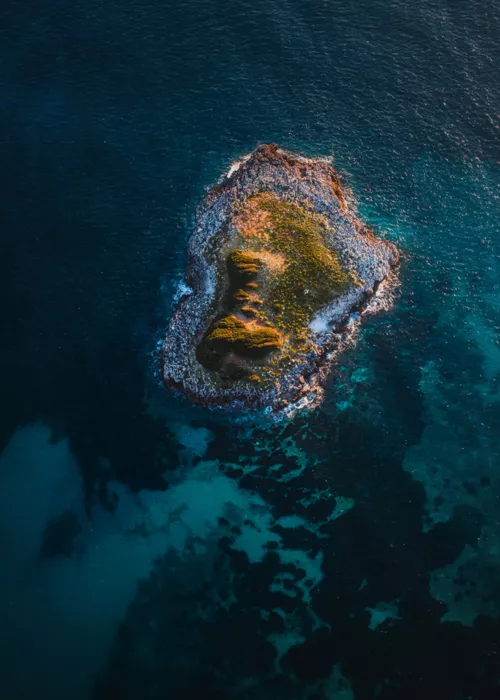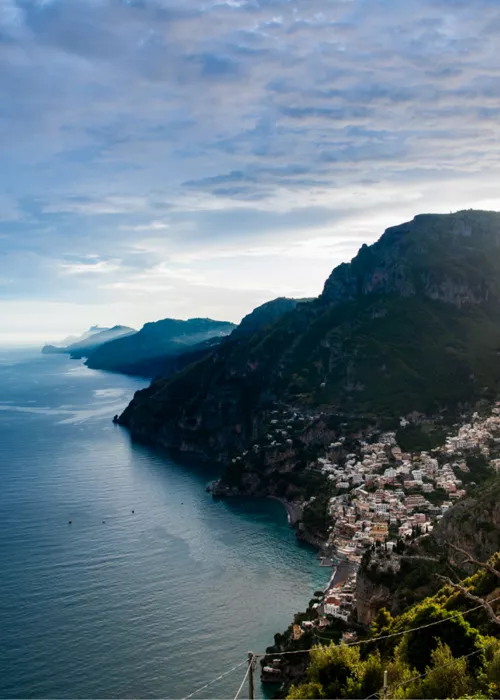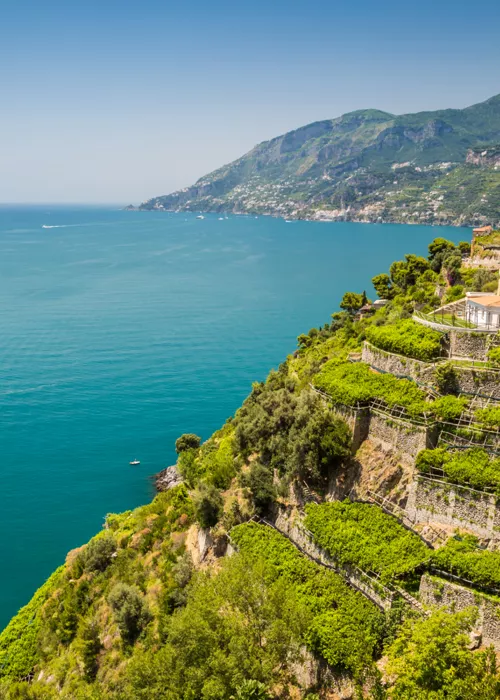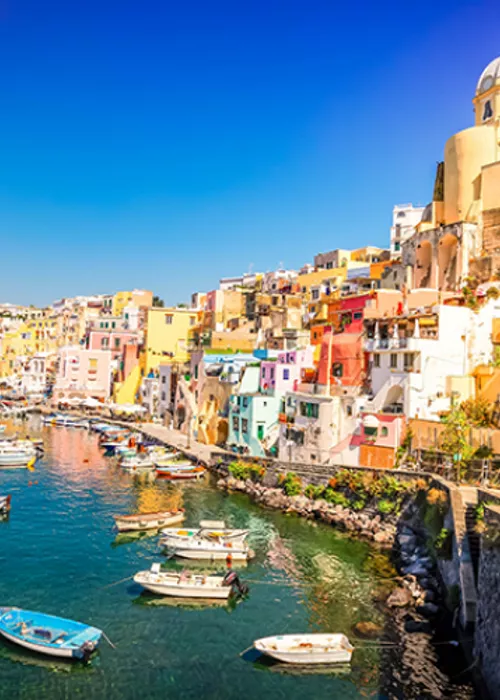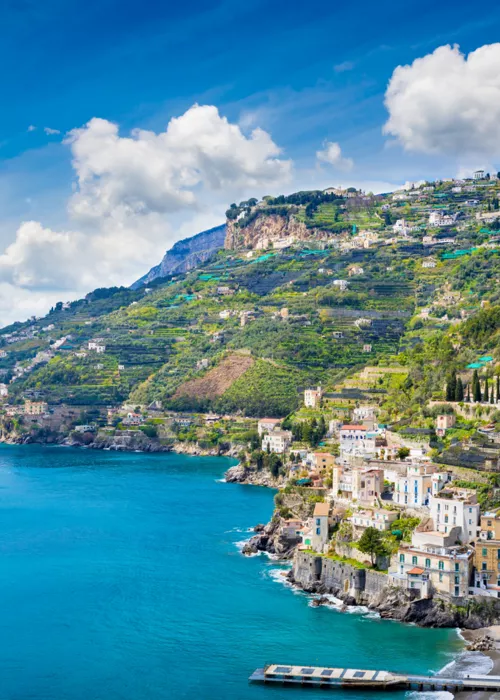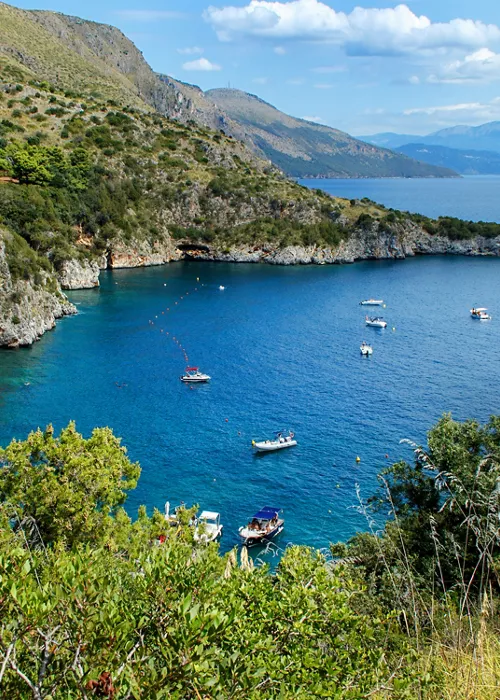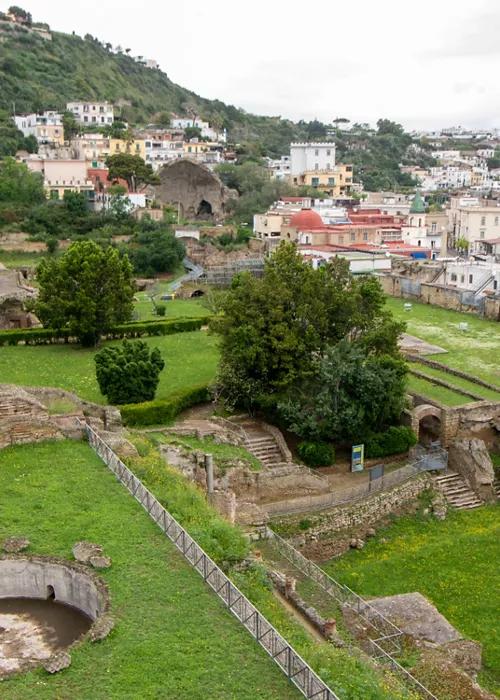Sanctuary of Montevergine

Every year it is a pilgrimage destination for over a million people who come here to honour Our Lady of Montevergine - commonly known as 'Mamma Schiavona', she who does not exclude. Every 2 February, the rite of Candlemas takes place. The devotional route, called the 'sacred mile', starts in Mercogliano. The Sanctuary, the result of 20th-century restoration, is part of a vast religious complex that includes several 17th-century buildings. The old church, which is accessed through the arches on either side of the presbytery, was instead rebuilt in Baroque style on an earlier Gothic building of which few traces remain
Bonito

What would Salvatore Ferragamo say if he saw what his home town is like today? Perhaps he would be quite pleased. Bonito, a ghost town, comes to life again through the brushstrokes and splashes of colour of internationally renowned street artists (Millo, Bosoletti, Alex Senna, Nemo's, Milu Correch, Carlos Atoche, to name but a few). Since 2011, the BOCA Collective, a cultural association committed to promoting interventions that enhance urban and rural contexts, has made public art contemporary. Thus, strolling through Bonito, one can admire murals that embellish the streets and buildings, enliven the atmosphere and tell of Ferragamo and his eclecticism. Like Blind, by Millo, who was inspired by the famous rainbow sandal model created by Ferragamo for Judy Garland, the protagonist of The Wizard of Oz, who sang "Over the rainbow". Again, Nodo, by Milu Correch pays homage to Salvatore Ferragamo through the female figure and craftsmanship, with the image of a woman intent on creating a knot with a strip of fabric
Zungoli

Along a stretch of the Regio Tratturo Pescasseroli-Candela, a reference point for trekking and horseback excursions, Zungoli, an Orange Flag village of the Italian Touring Club, is situated on a hill and watched over by three mountains: the Molara, the Monticelli and the Toppo dell'Anno. Its ancient heart has retained its original appearance and is criss-crossed by a maze of cobbled lanes that line the hillside. Worth visiting is the Norman Castle, which retains three of the four towers and an access ramp with the municipal coat of arms in porphyry stone. Then, the convent of St Francis and the church of the Incoronata. Beneath the narrow streets of the centre are interconnecting tufa caves, dating back to the Byzantine era and now used for the maturing of caciocavallo podolico, the champion of local gastronomy.
Calitri

Calitri: a cluster of colourful houses that seem to be posed to be photographed, curving along the contours of the land. Castle Village, the oldest part of the town where the ruins of the old fortress stand, invites you to look down on the panorama of Alta Irpinia. The historic centre also reveals ancient caves, once used as stables or factories, abandoned after the earthquake and now recovered as places of hospitality or cheese maturation. It is also a city of ceramics, the history and curiosities of which are told in the Ceramics Museum. Finally, every summer, it hosts the Sponz Fest music festival, created and directed by Vinicio Capossela, a singer-songwriter originally from these lands (his father is from Calitri). Along the road that leads to the Goleto Abbey, you can stop at Lake Conza, a WWF oasis, and the archaeological site of Conza, which bears witness to the ancient civilisations that inhabited these lands, and at Lioni, another town animated by urban art.
Abbey of Goleto

To get there, one crosses hills, wooded reliefs and agricultural landscapes. The Abbey is truly the enchantment of this area. Shrouded in silence, it is all that remains of an ancient fortified monastic citadel, built entirely of stone and struck several times by earthquakes. The large church is reduced to ruins, but still imposing in its noble late Baroque style, the result of a design by Domenico Antonio Vaccaro between 1735 and 1745. Then there are two small churches one above the other: the upper church, dating from 1255, known as the Chapel of St Luke because it housed the saint's relics, and the lower church from 1250, in Apulian Romanesque style. The Febronia tower dates back to 1152 and is marked by Roman reliefs and epigraphs. From here you can visit Nusco, the balcony of Irpinia.


